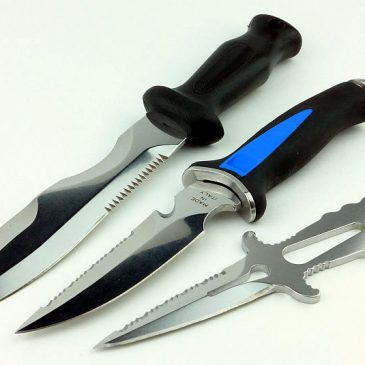This review provides further details for the three Whitby & Co Dive Knife models DK9, DK11 and DK511/14 which could not be included in the Dive Knives 2016 – Mega Test Review
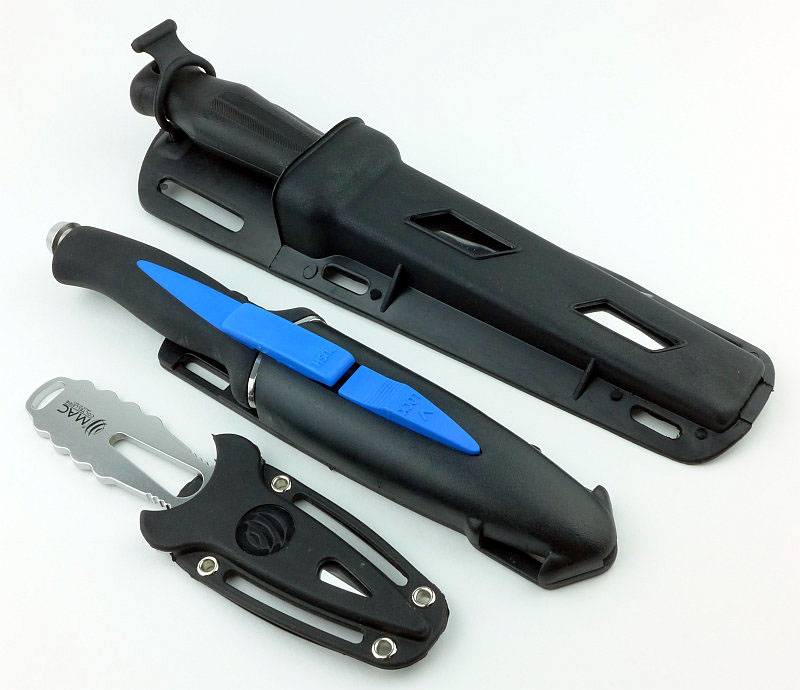
The Blade and Handle Geometry:
Most knife specifications have a basic description of the blade geometry, but in this section I will be taking a more detailed look at geometry and balance.
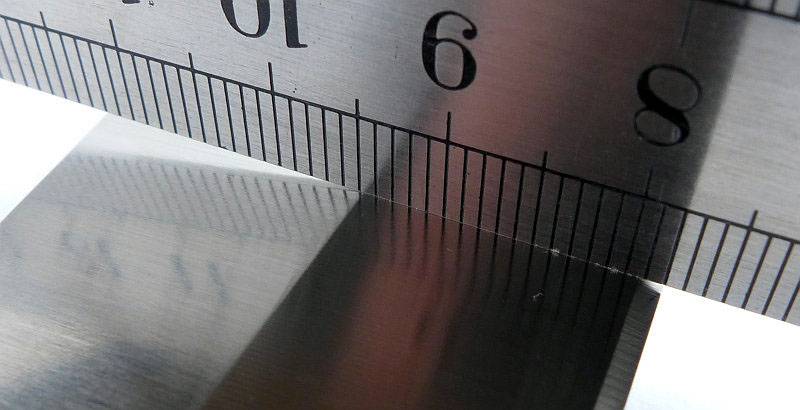
Using a set of gauges and precision measuring equipment including a Vernier protractor, callipers, fixed radius gauges and the unique Arc Master adjustable radius gauge (the one that looks like a crossbow).

These measurements have been tabulated and are presented along with other blades.
Key aspects such as the primary bevel angle, grind type, blade depth, blade thickness, length, weight are detailed, along with balance information.
The ‘Balance relative to the front of the handle’ tells you if the knife will feel front heavy, or if the weight is in your hand (a positive value means the weight is forward of the front of the handle). The ‘Balance relative to the centre of the handle’ indicates how close to a ‘neutral balance’ the knife has in the hand.
In the case of full convex grinds the approximate centre of the grind is used for the primary bevel angle estimate.
The measurements are presented alongside some of the other knives from the Dive Knives 2016 – Mega Test Review
There are three Whitby knives, and these have been logged across two comparison tables.
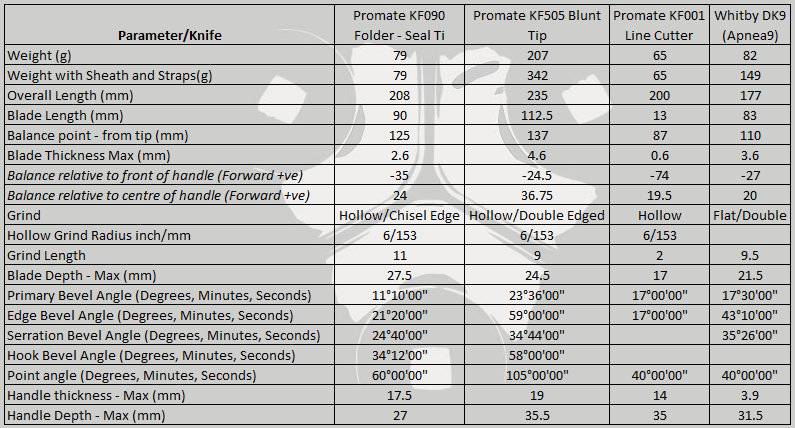
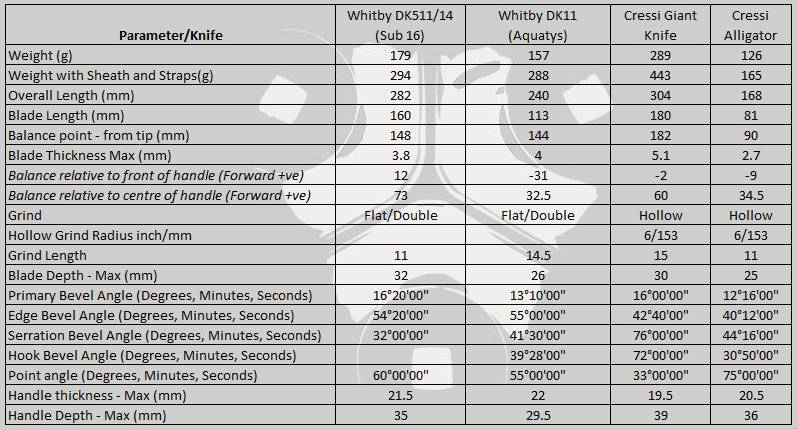
A few more details of the DK9:
Before we really get going looking at the details, you might be curious as to these being Whitby & Co knives yet coming in alternately branded packaging. Whitby & Co source some of the foremost international brands and supply Trade customers with these products.
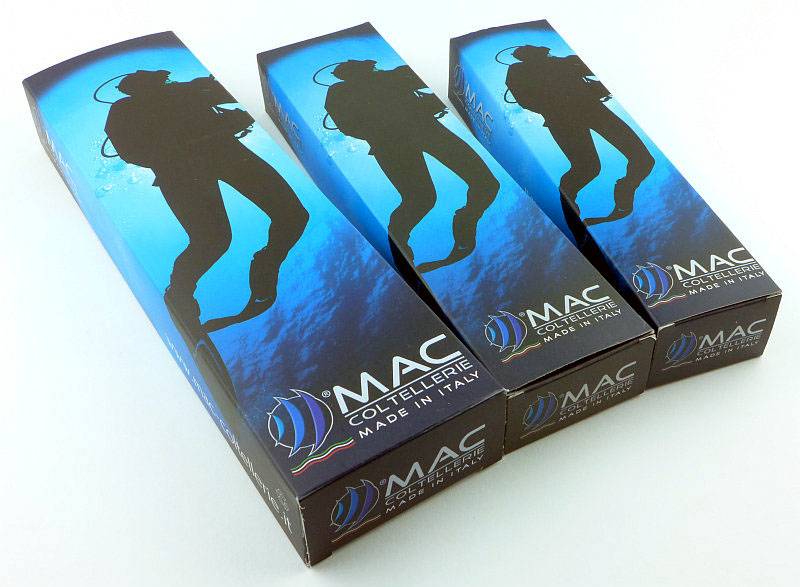
The knives on test here are referred to under their Whitby & Co model numbers.
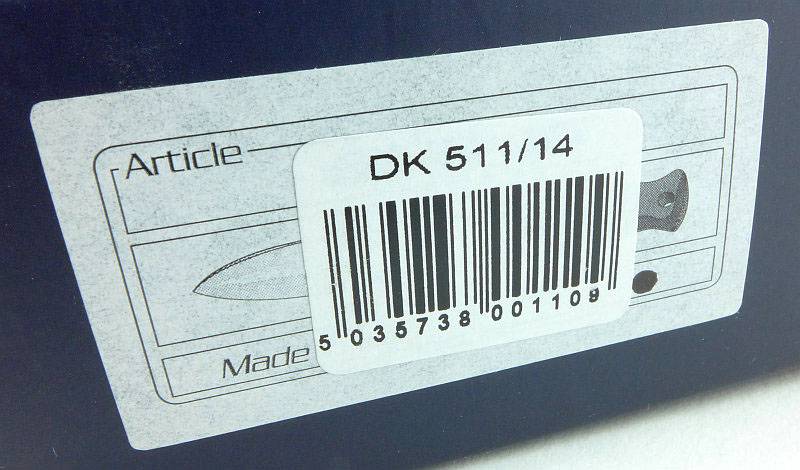
Starting with the smallest of the Whitby dive knives, the DK9, it is supplied with two rubber straps with quick release buckles and a leaflet.
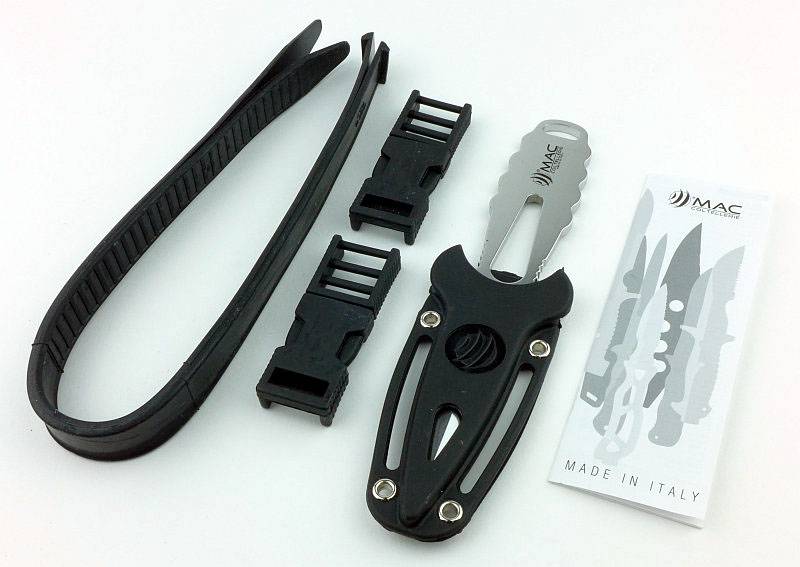
On the back of the box are the instructions for assembling the straps. This is the same for all the models on test here.
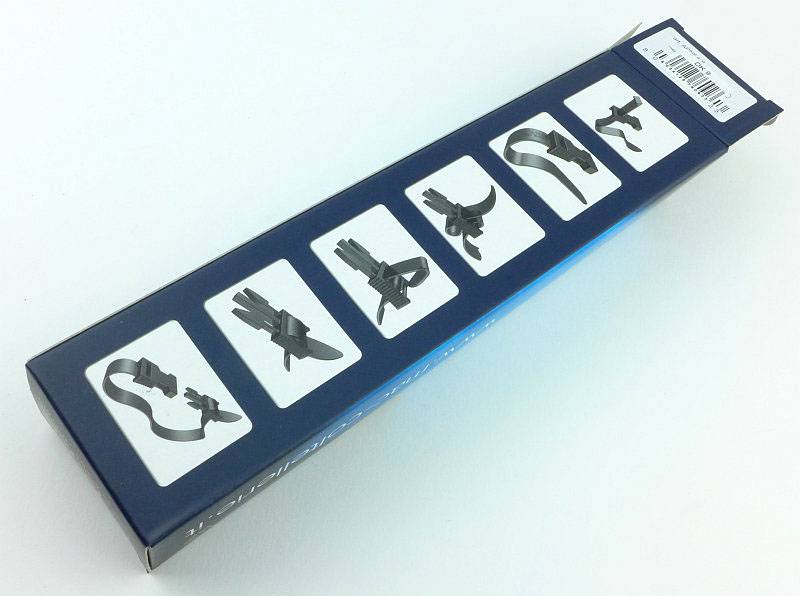
One end of the rubber strap is moulded so that it won’t pull through the buckle.
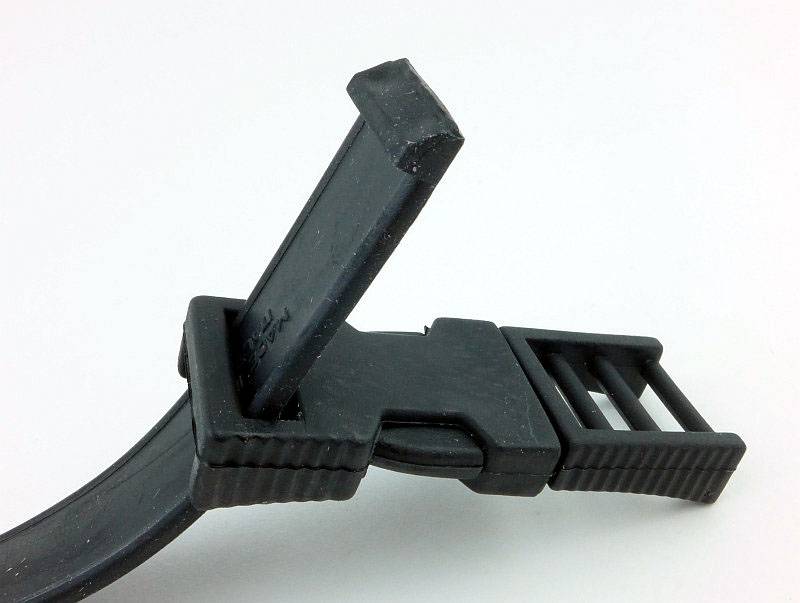
Onto the DK9 itself, this is exactly as it comes out of the box, in its sheath.

The knife construction is a single piece of flat stock steel. Being a typical dagger design with shapr point and double edge, it has no diving safety features that would make it safe for cutting away entanglements from the body.
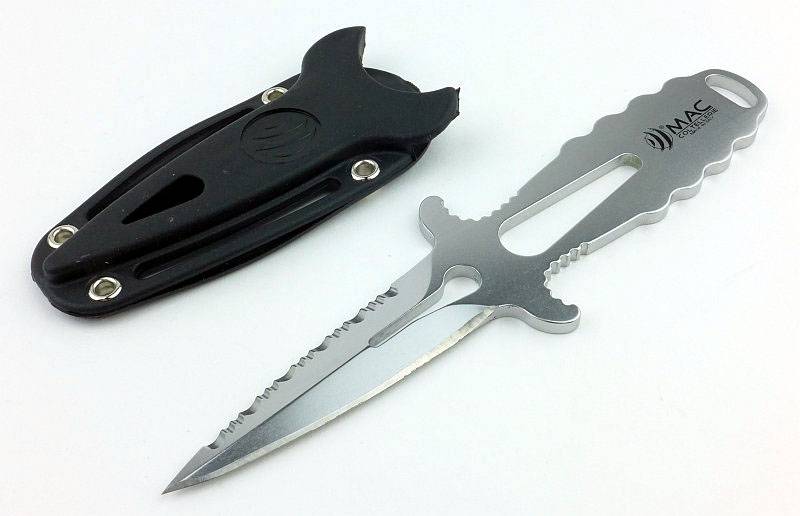
The sheath consists of two moulded plastic halves riveted together. Each side has a slot to fit the rubber straps into.
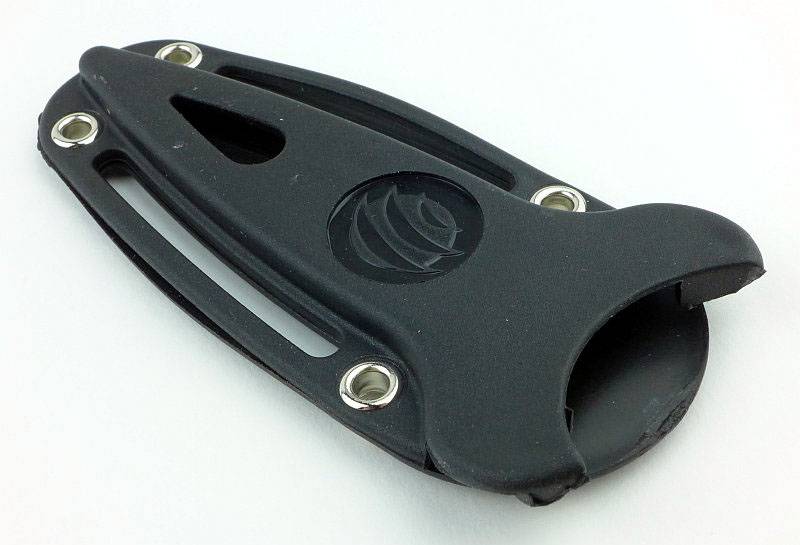
At the top of the front piece of the sheath are a couple of plastic hooks which hold the DK9 in the sheath.
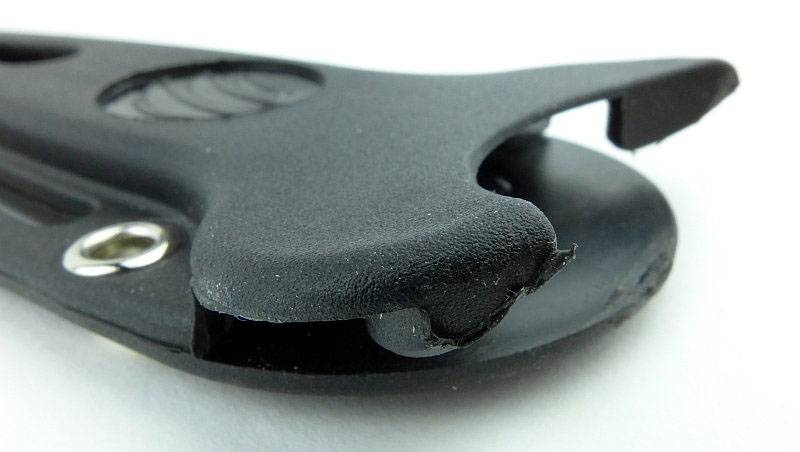
With the knife inserted you can see how the plastic hooks fit over the guard.
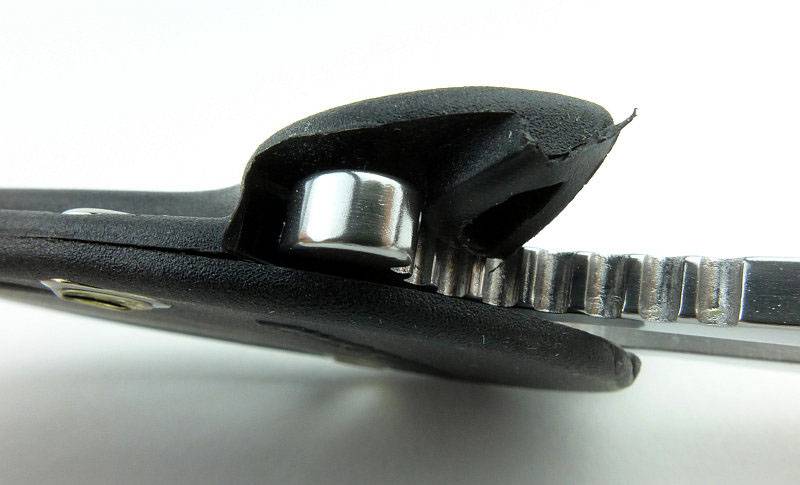
The back of the sheath is a simple flat plastic surface.
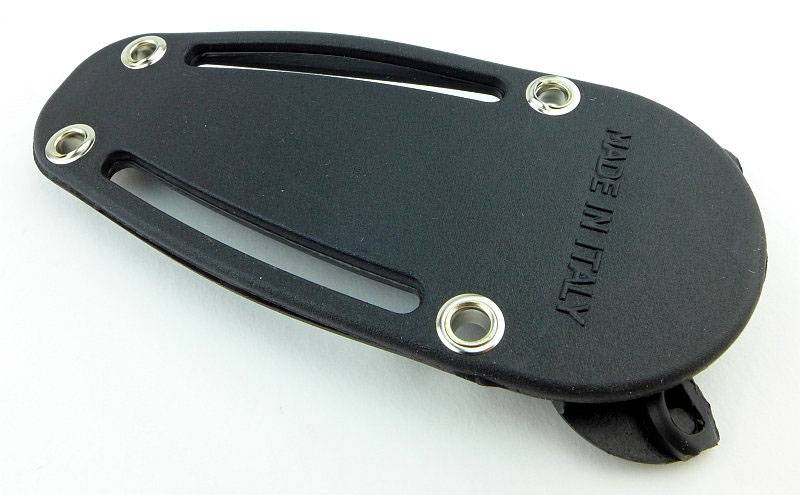
Let’s start looking round the knife. From this overall view, notice that in the handle and blade are two types of shackle wrench cut-out and the knife is a one piece all metal construction.
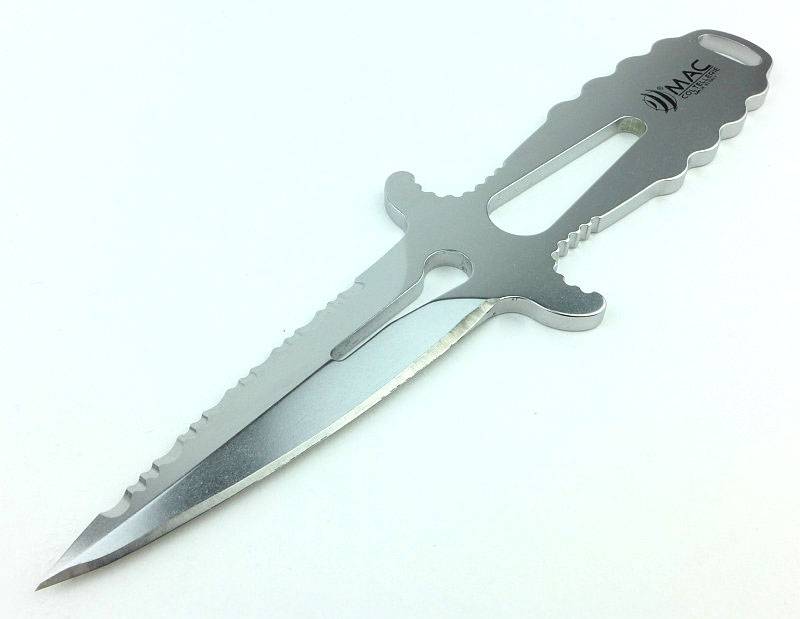
Having a typical dagger grind, there are no sharp corners/edges to the plunge lines.
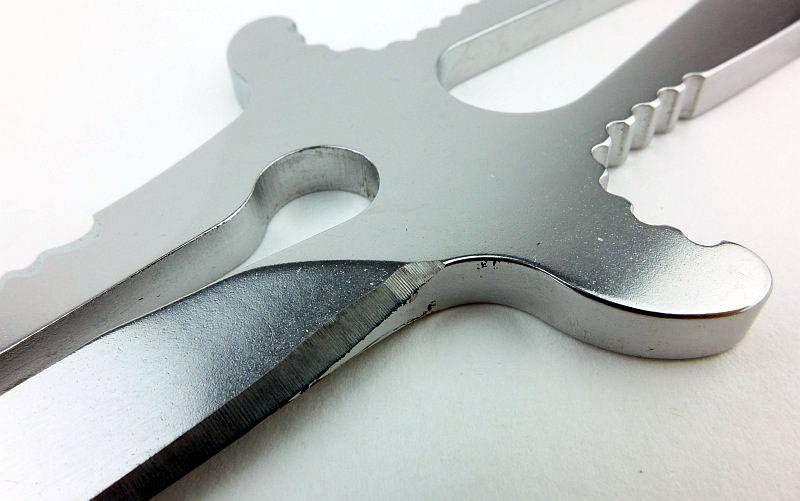
One side of the double edged blade has some very effective serrations.
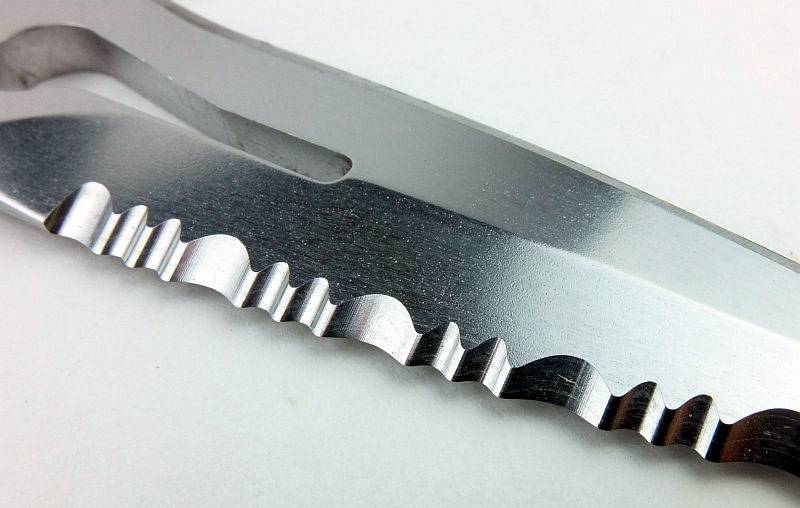
The serrations are formed with a single bevel, so when looking at the back, there is no visible edge bevel.
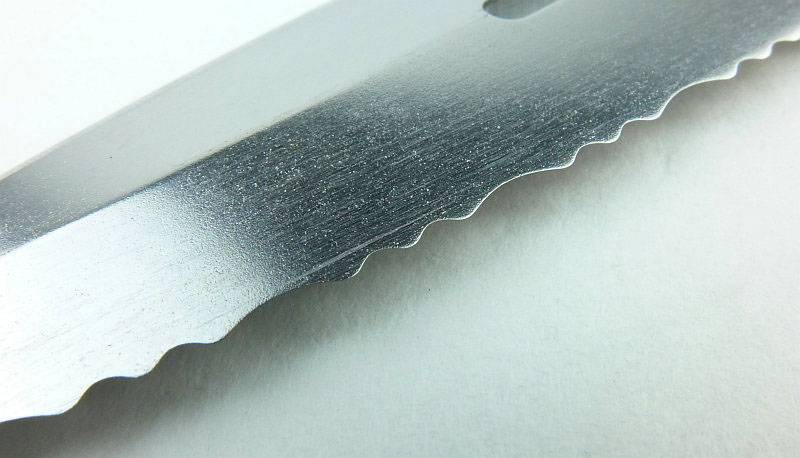
Quick close-up of the blade tip.
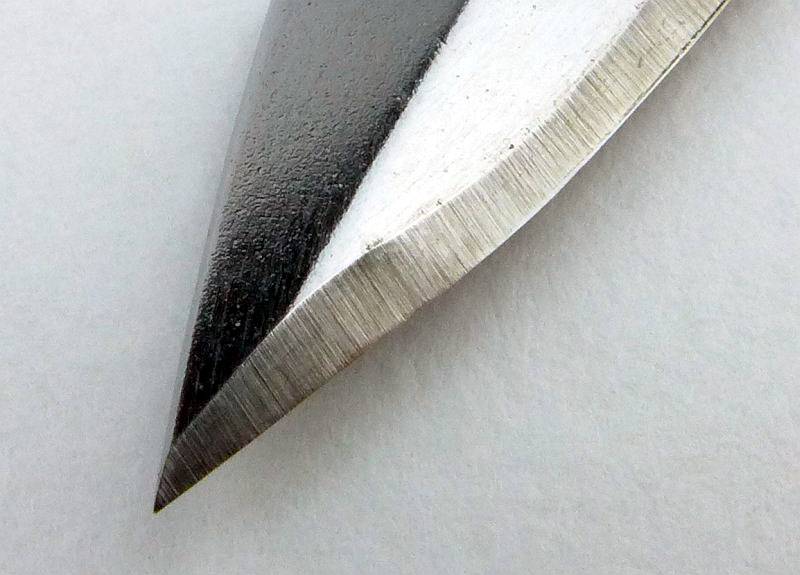
A generous sized lanyard hole is included in the handle.
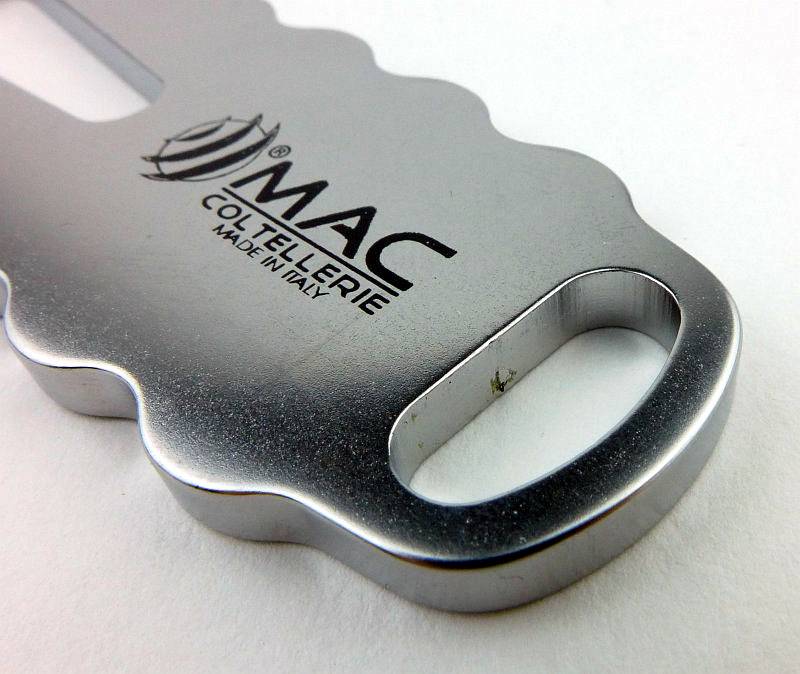
It is a relatively compact blade, and despite the thin handle is comfortable enough in the hand (I take XL gloves).
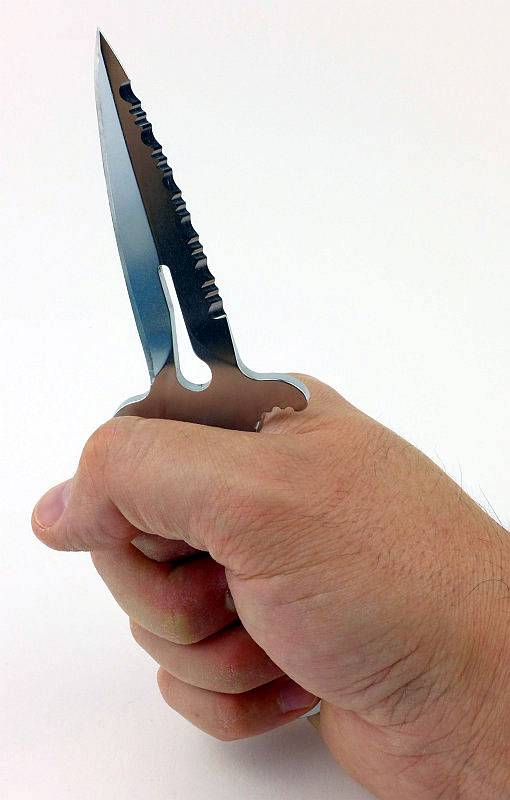
There is room to fit both straps, but being so compact I found I only needed one and it stayed where I needed it.
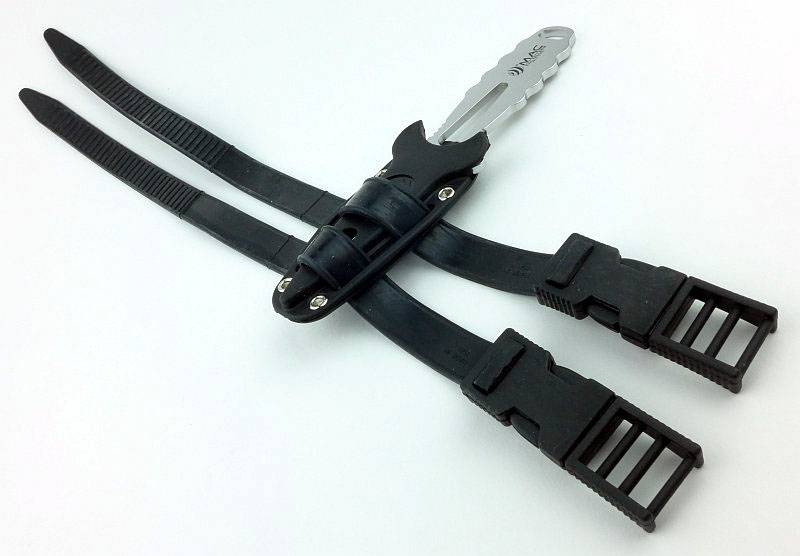
As quick-release buckles are used, you set the strap length to fit at which point they operate as fixed length straps. This is how the rubber is threaded through the adjustment side of the buckle.
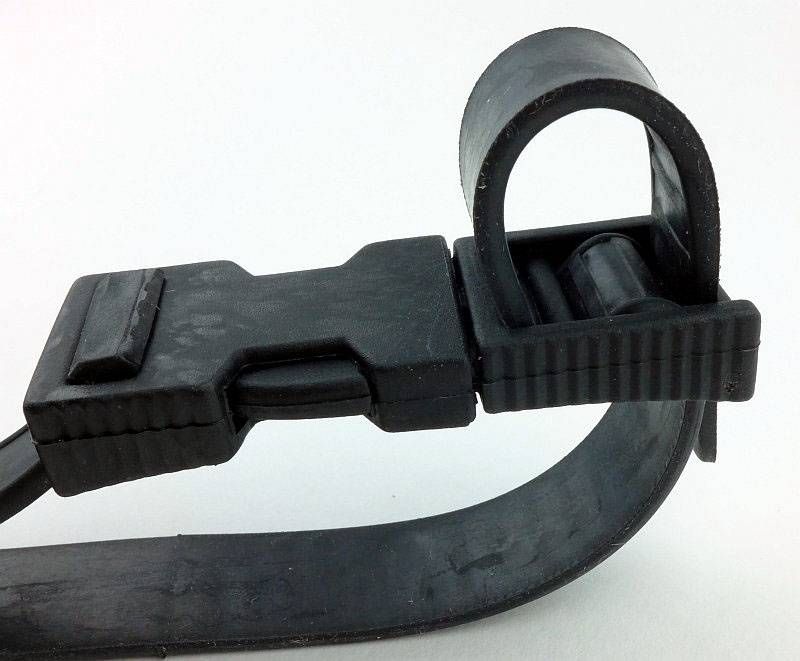
A few more details of the DK11:
Taking a step up in size to the DK11, and we also take a step up in design and function. As with the DK9, the DK11 comes with two straps with quick-release buckles.
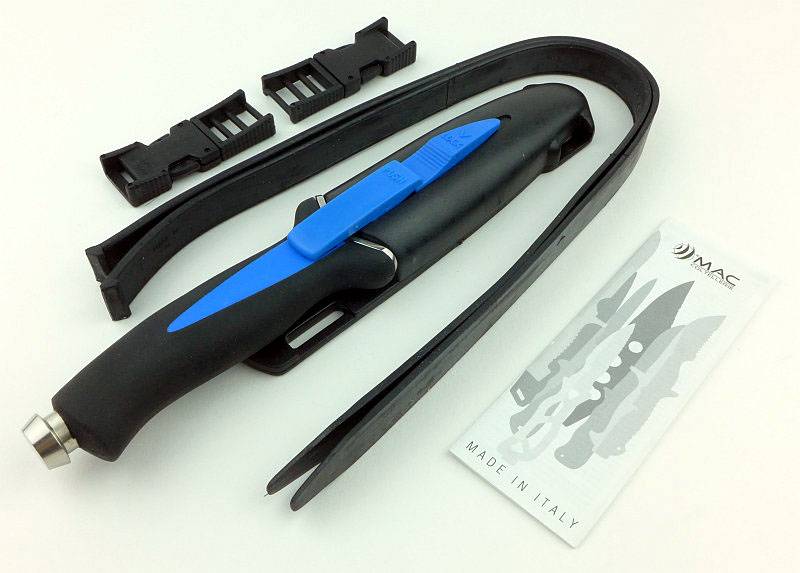
A more substantial package than the DK9. Note that there is a sliding lock for the knife release lever.
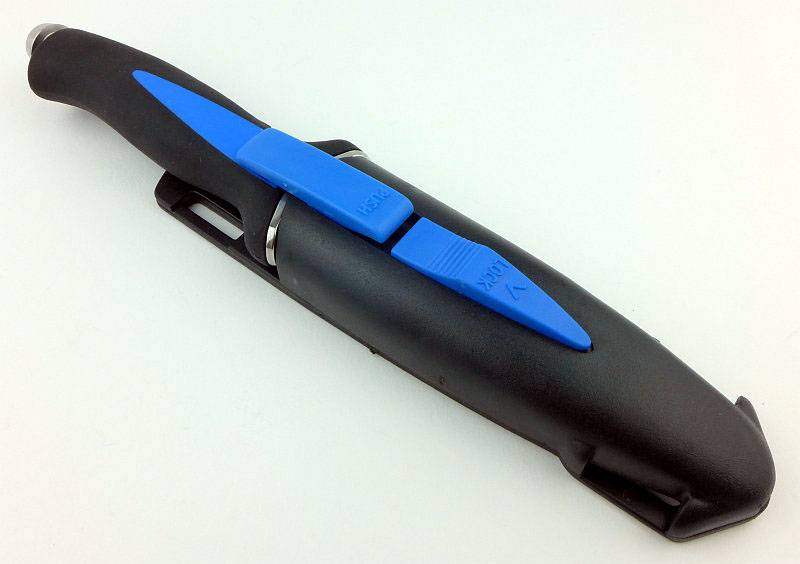
Box fresh and not yet subjected to the corrosion testing, the DK11 has a double edged blade with a line cutting hook.
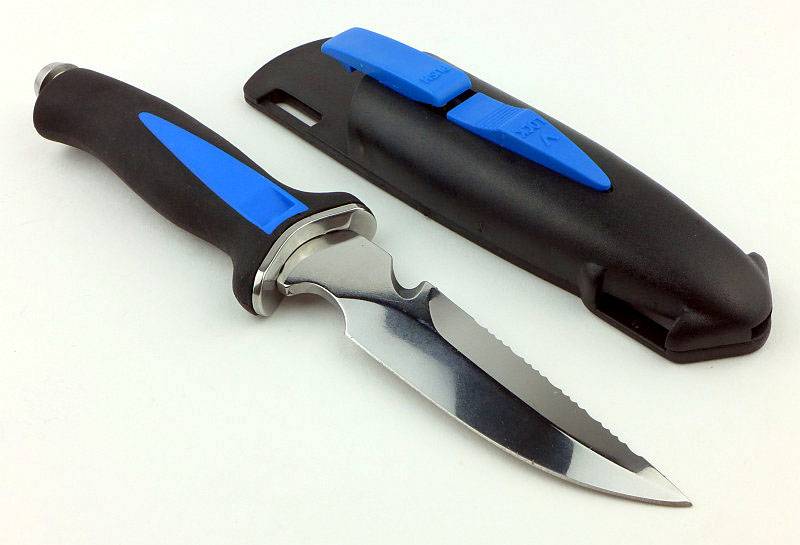
On the front of the sheath is a sprung knife retaining catch with a hook that engages with the knife handle.
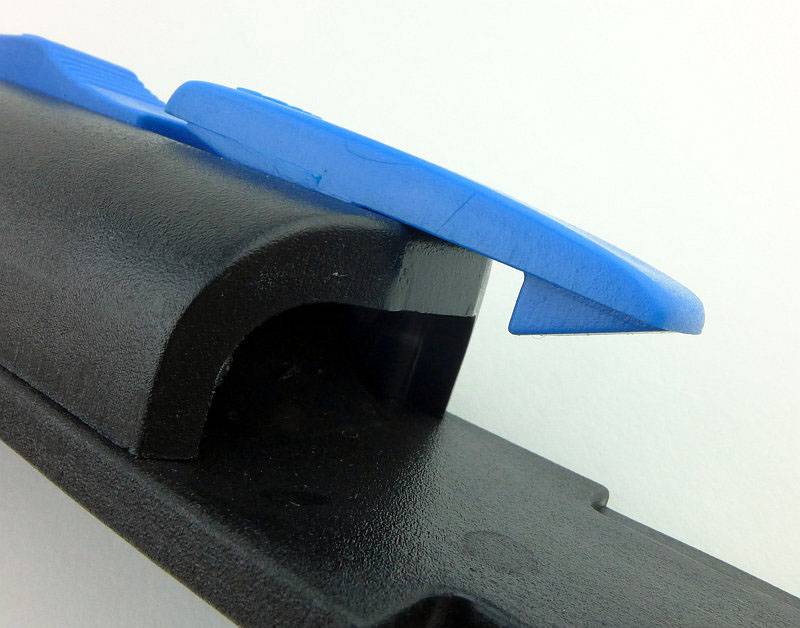
Requiring a reasonable pressure, the retaining catch lifts away to release the knife.
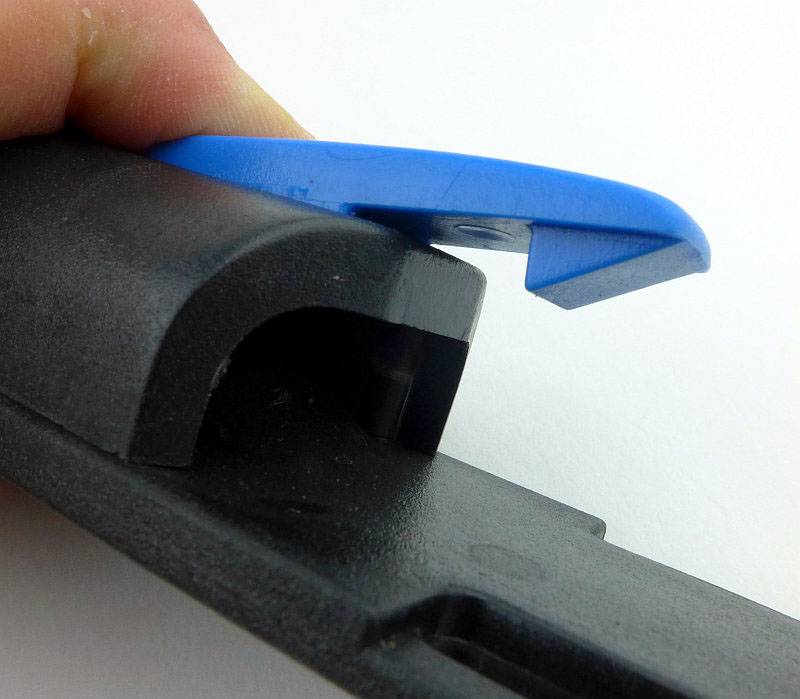
The two halves of the plastic sheath are screwed together.
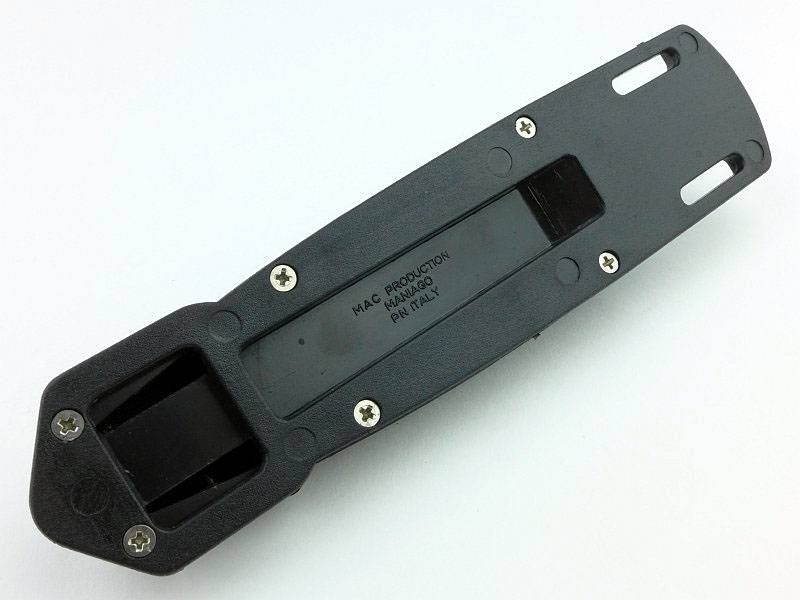
The spine of the blade has the serrations and cutting hook, and the DK11 also has a hammer pommel.
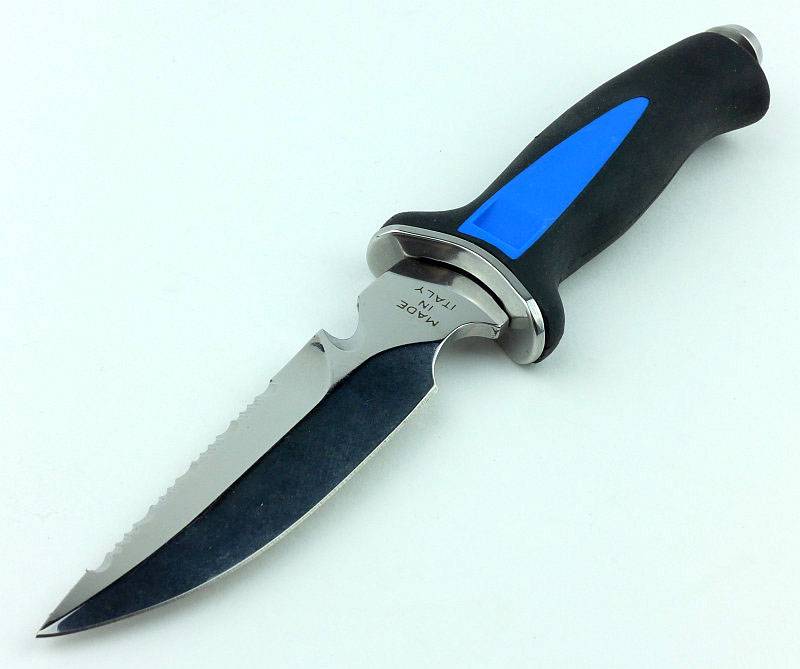
At the front of the handle a stainless steel curved guard is incorporated. There is what might be considered a finger choil in the ricasso, but this is not something I would use when diving.
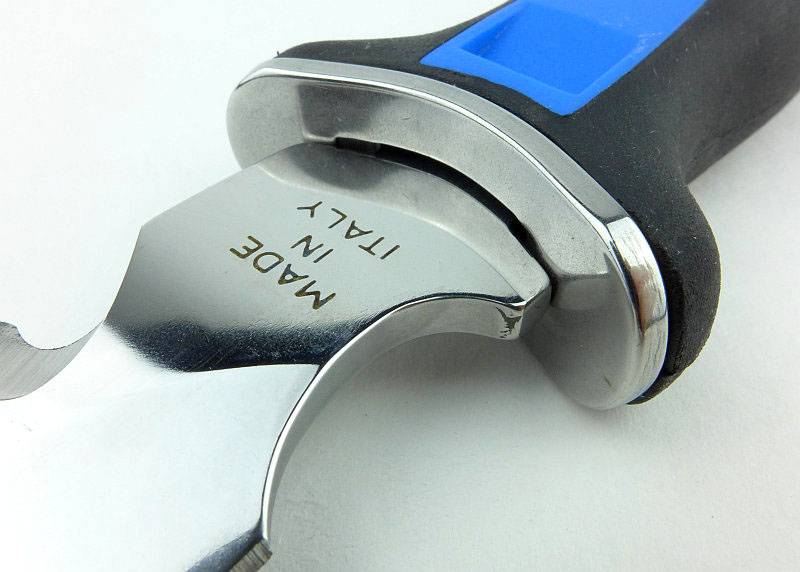
A close-up of the blade tip and factory edge.
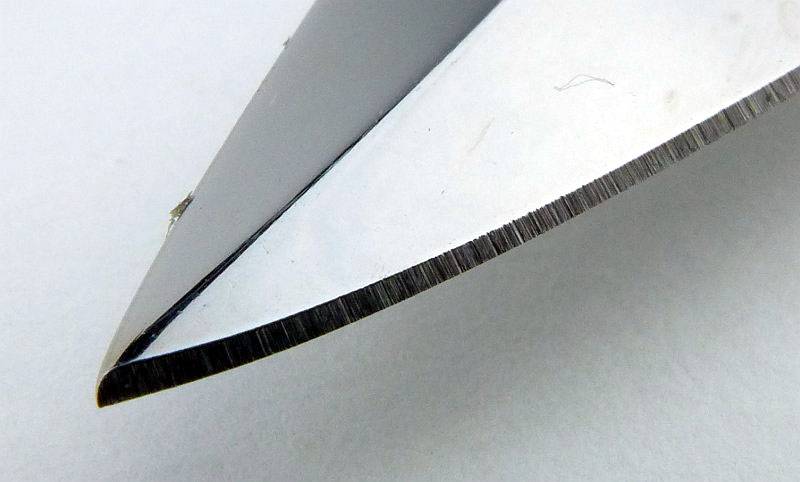
The serrations are a similar pattern to the DK9, but have three repeats of the smaller groove rather than two.
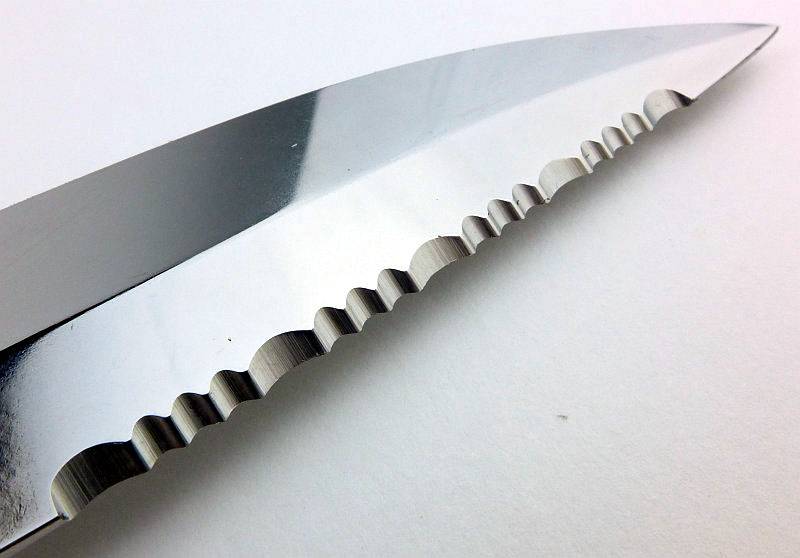
Just as with the DK9, the serrations are formed with a single bevel, so from the other side have no visible bevel.
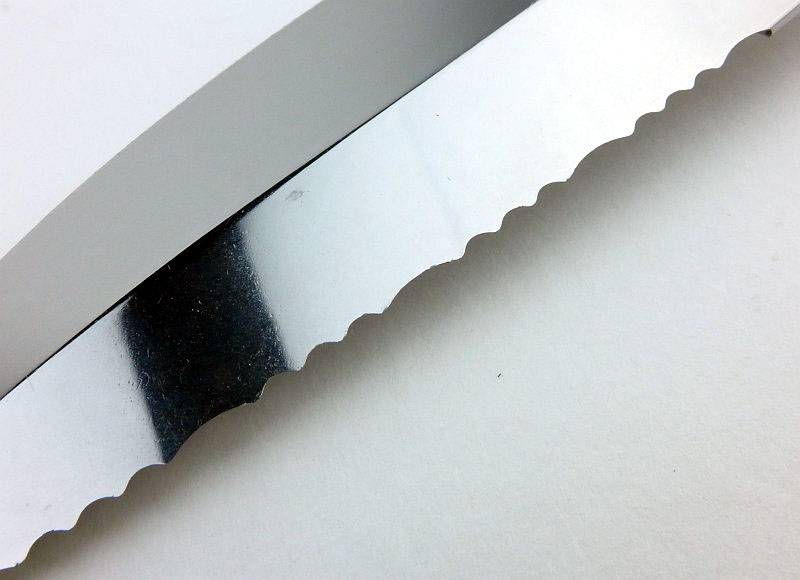
A line cutter hook is included near the guard.
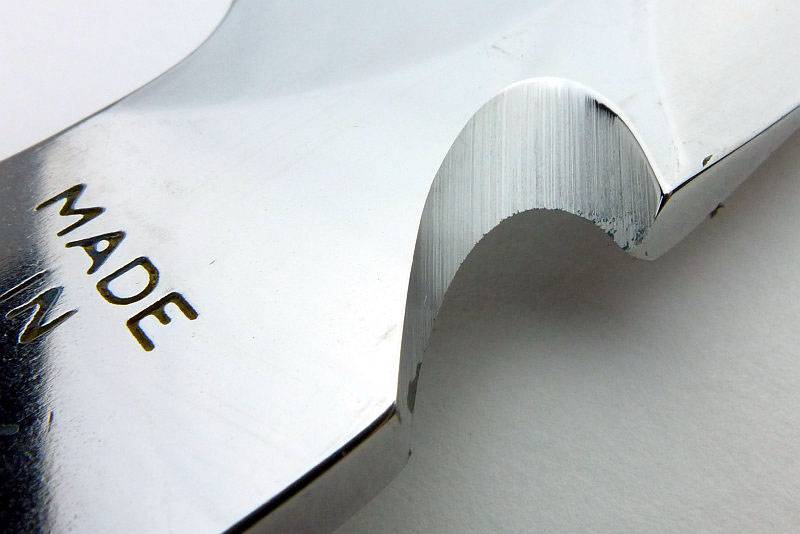
Despite its smooth lines, the handle is nice and grippy thanks to being rubber.
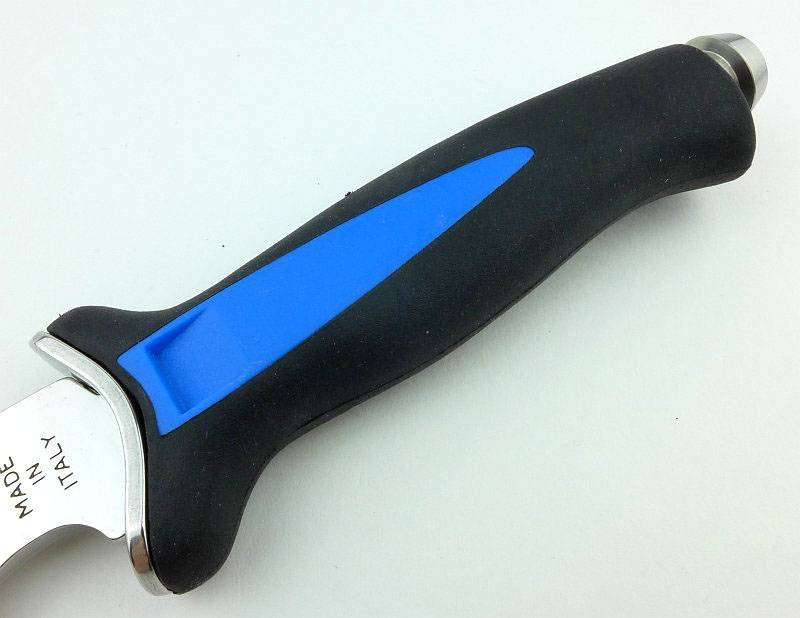
The blue plastic insert includes the knife retention catch point.
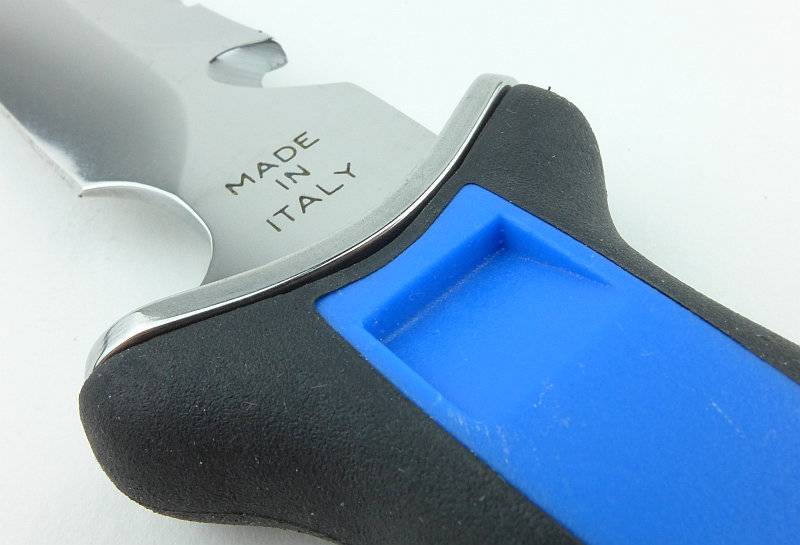
With the DK11 you have a good mid-sized all rounder blade.
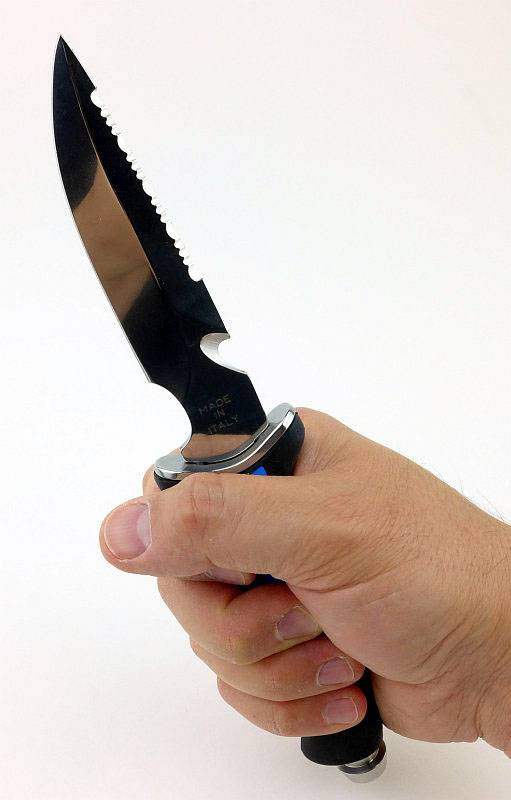
After threading the straps through the sheath, you still need to thread the loose end through the buckle.
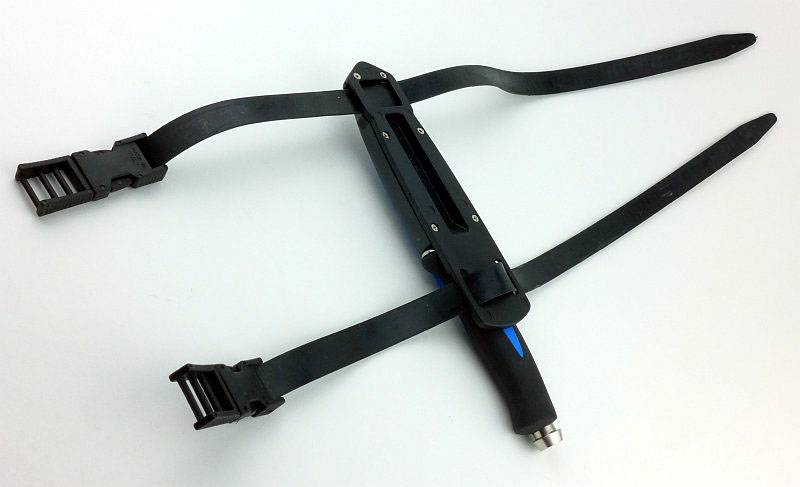
A few more details of the DK511/14:
Lastly we have a bit of an old-school BFK (Big F’n Knife), the DK511/14. As before, there are two adjustable quick-release buckle straps included.
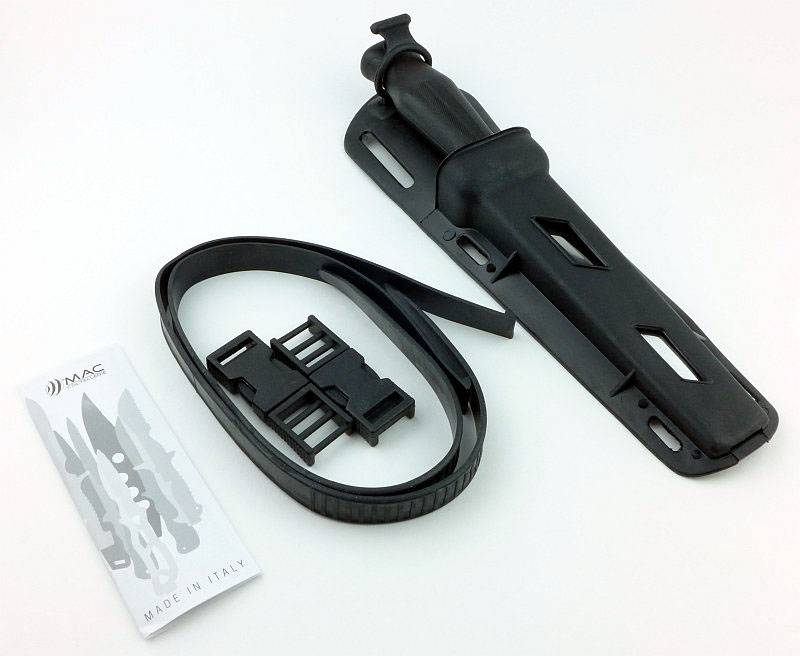
This is what the classic dive knife used to look like, and it still has a place today.
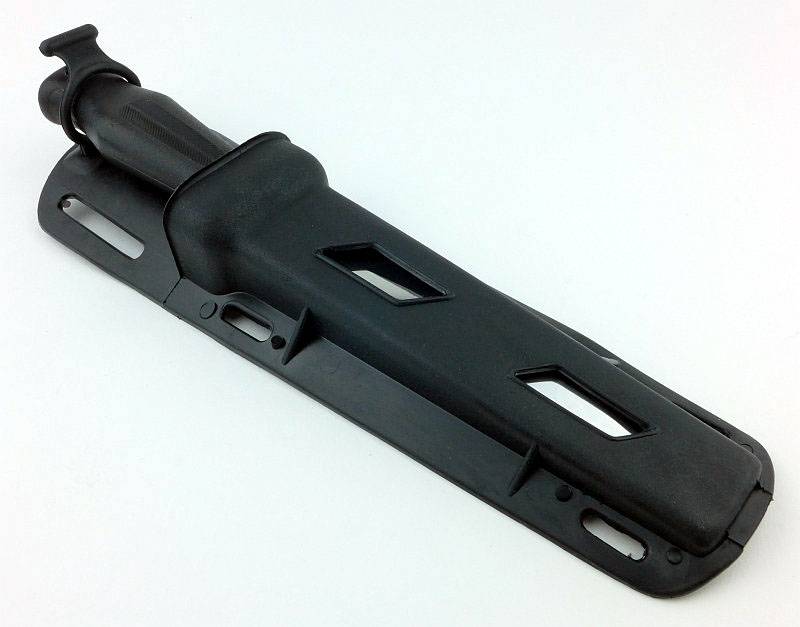
Again with the classic design we have a rubber ring fitting over the end of the handle to keep the knife in the sheath.
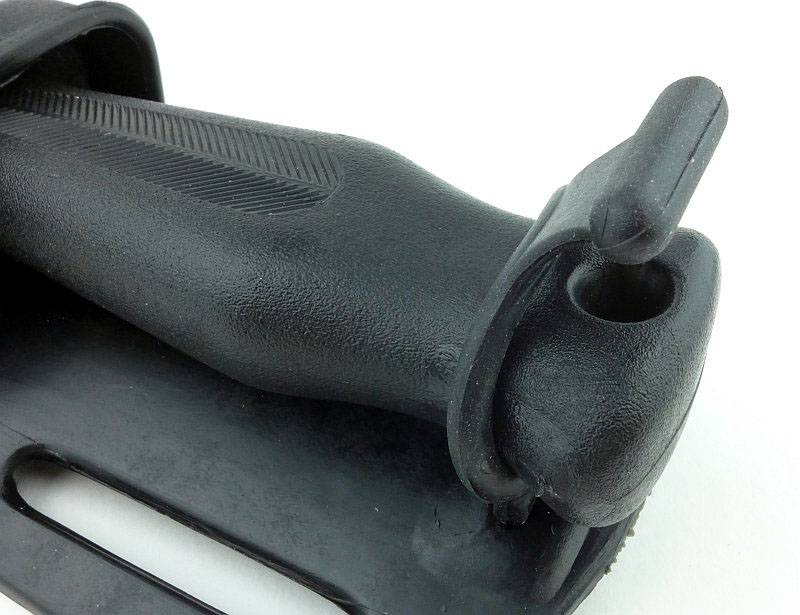
To release the knife just pull the ring off the handle using the tab provided.
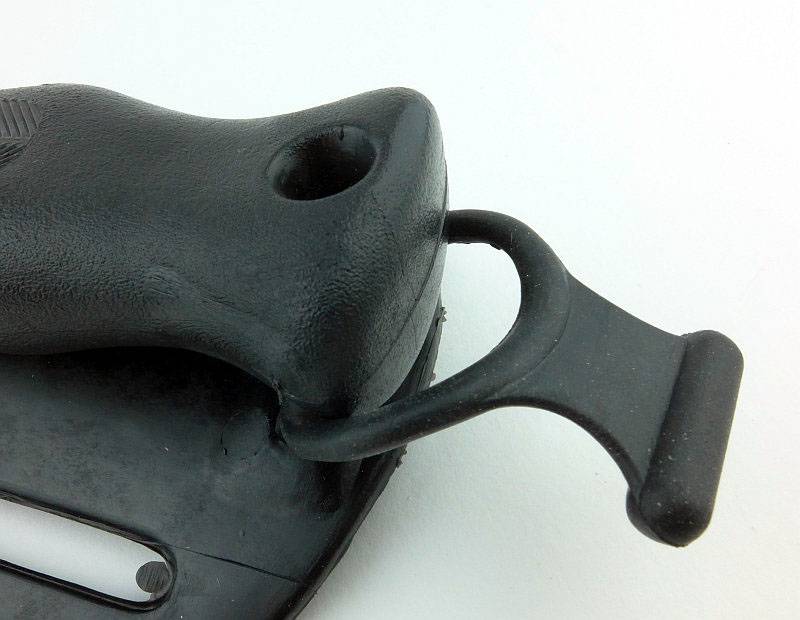
Definitely not a compact blade, this is a full size traditional dive knife design.
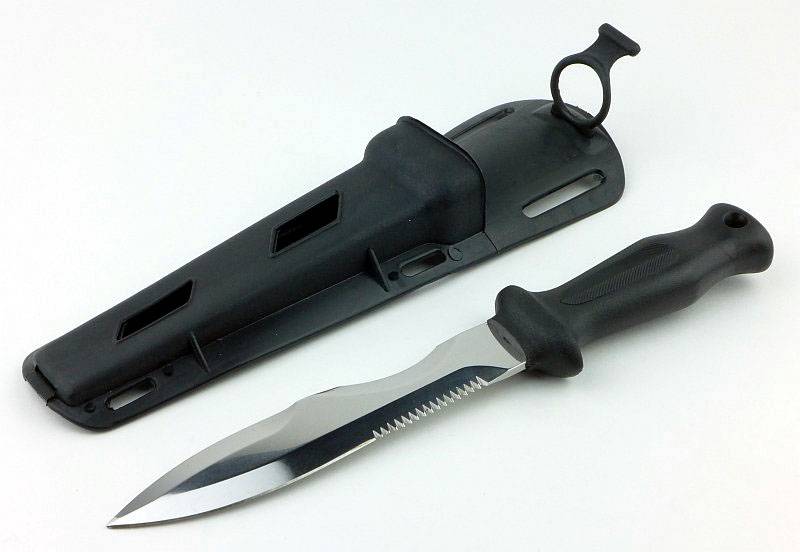
A real working blade, there are several useful features.
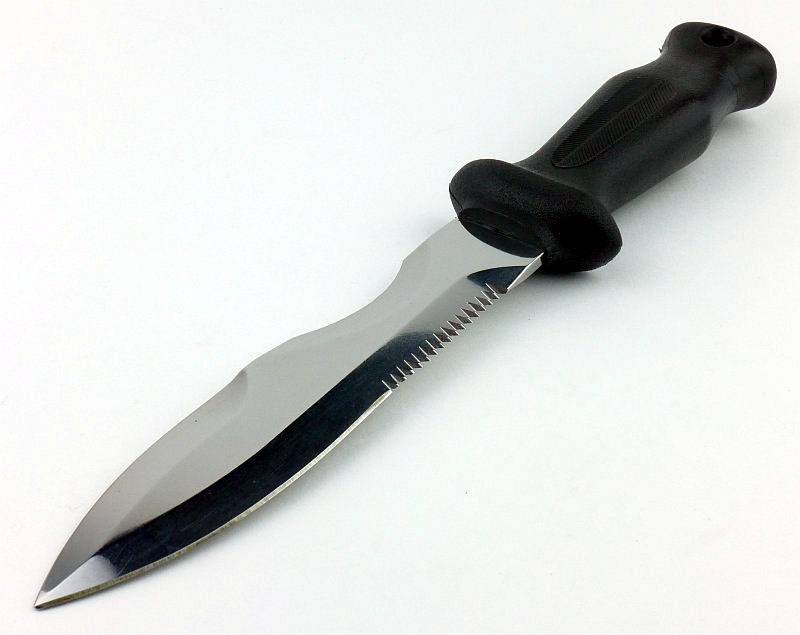
Very ‘saw-like’ serrations which shred rope, even if not cutting it cleanly.
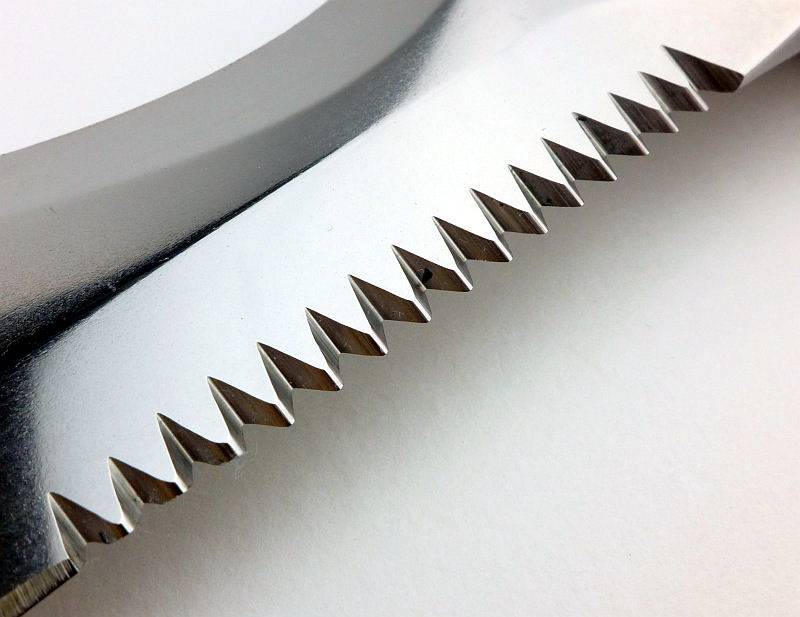
A close-up of the tip shows it could do with a little work, but actually not having a needle like point is safer for diving.
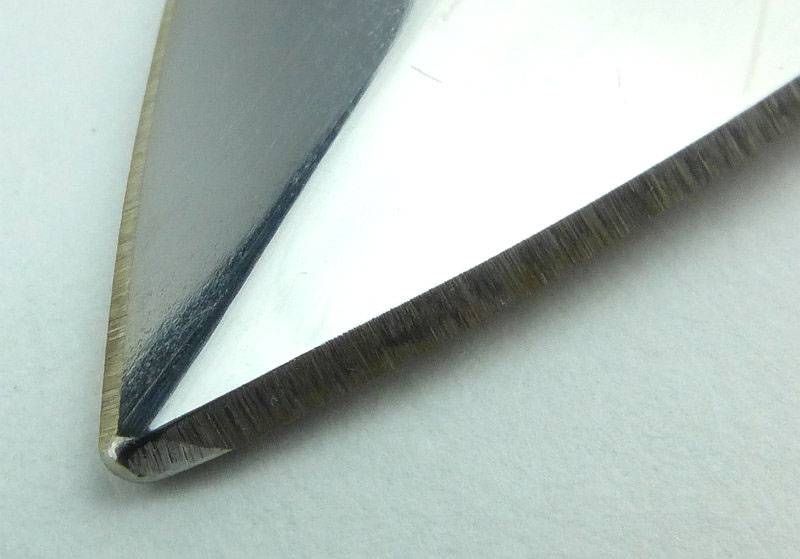
Unlike the hook type of line cutter, the DK511/14 has a much bigger line cutting feature with an elongated scallop which helps contain what you are cutting by preventing the line/rope from slipping off the cutting edge.
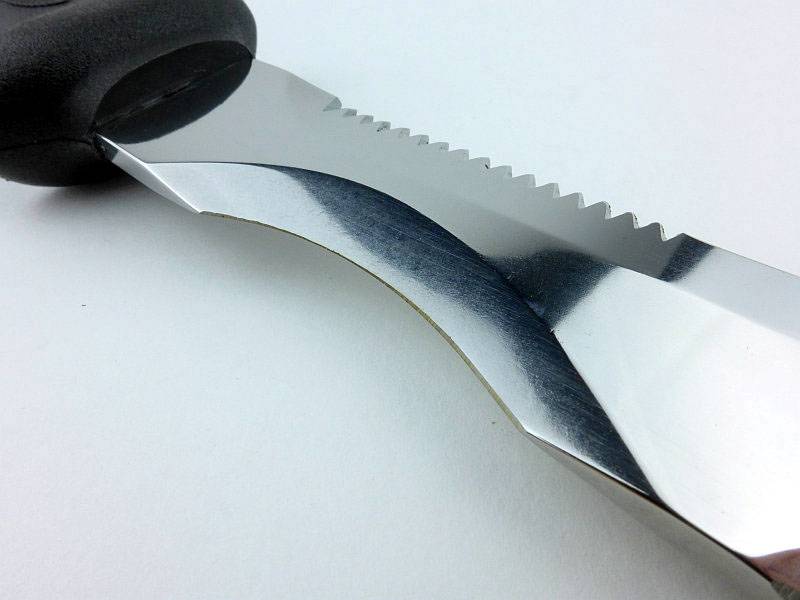
The handle is coffin shaped with a flared butt and guard.
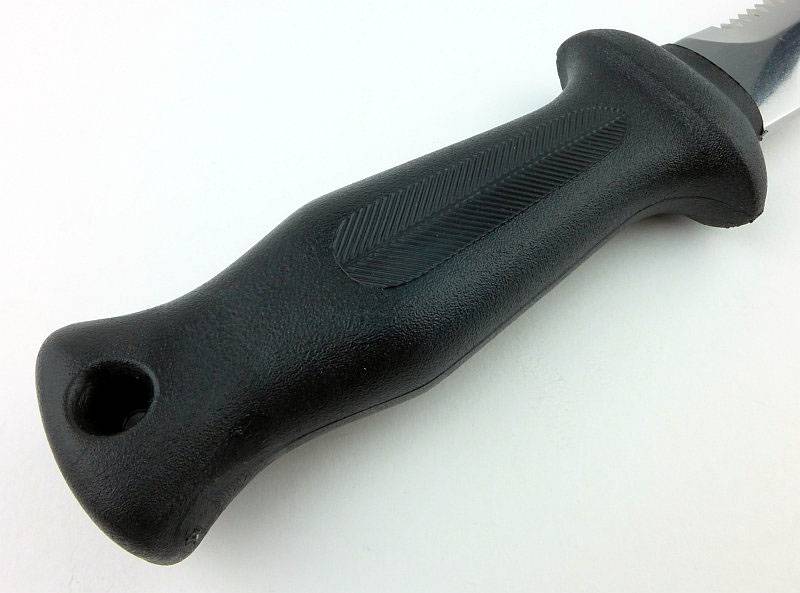
Yeah, this is a BFK!
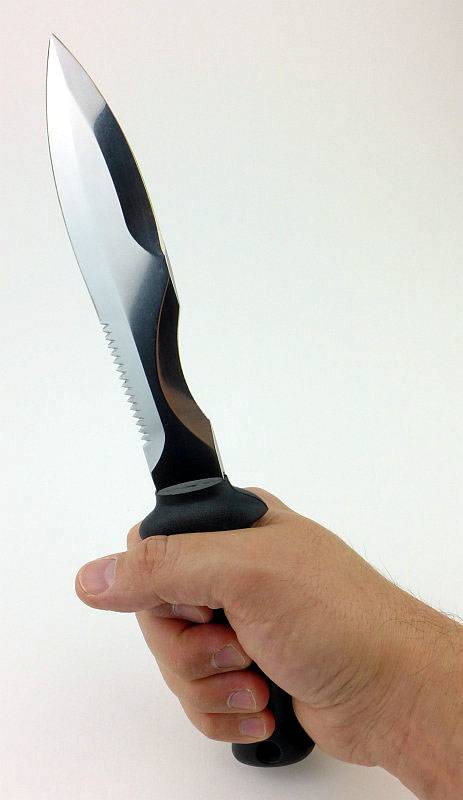
You have a couple of options for strap positions, and the back of the one-piece sheath is shaped to fit your leg.
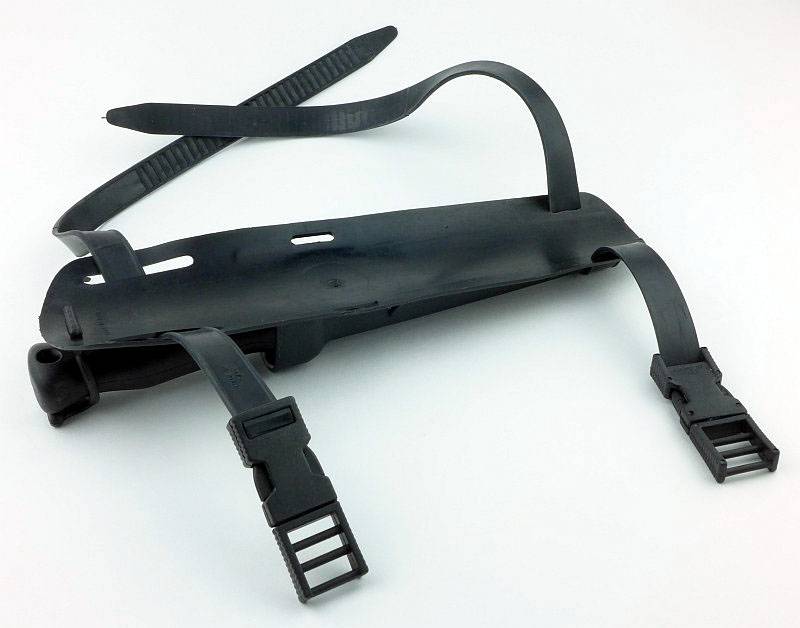
What are they like to use?
By featuring these three models, this review covers a wide range of the styles of knife offered by Whitby. Not to be too generalistic I would class these three as a backup, general purpose and heavy duty type of knife.
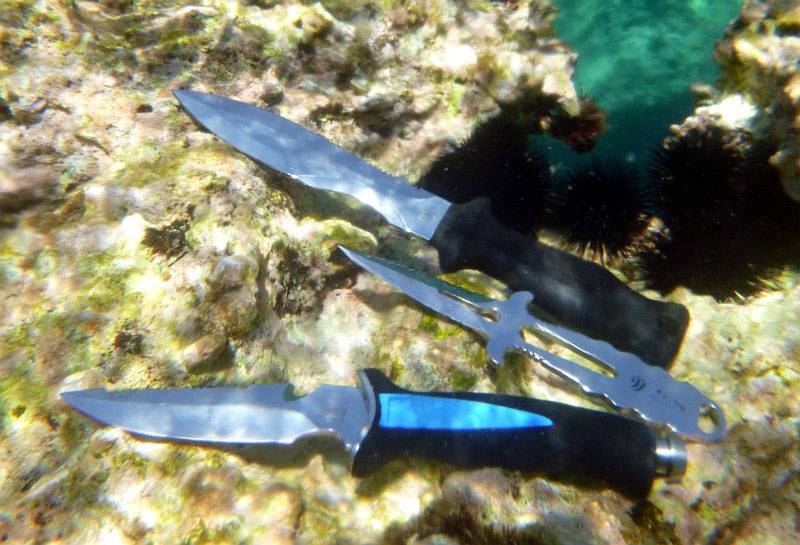
I’ll not cover the cutting again as this is detailed in the Dive Knives 2016 – Mega Test Review which you can check for more information on the cutting test results.
None of these dive knives has a blunt tip, which means you do need to take great care using them as a release knife. All of them also have double edged designs which again makes them very hazardous for release use especially if you have line or rope wrapped round you.
Price-wise the DK9 and DK511/14 come in at the low end of the scale, and the DK11 entering the low-mid price range. This is an important consideration as though not perfect, these have proven to be very good value.
Remember that the corrosion testing was tantamount to abuse for these knives. No cleanup, and no protection for the blades, just a highly corrosive environment.
Starting with the DK9, unsurprisingly, the rust has taken hold inside the sheath, and where the edge has been ground (leaving a rougher finish than the rest of the knife). With only two spots suffering significantly, very little of the cutting edge was damaged by this corrosion.
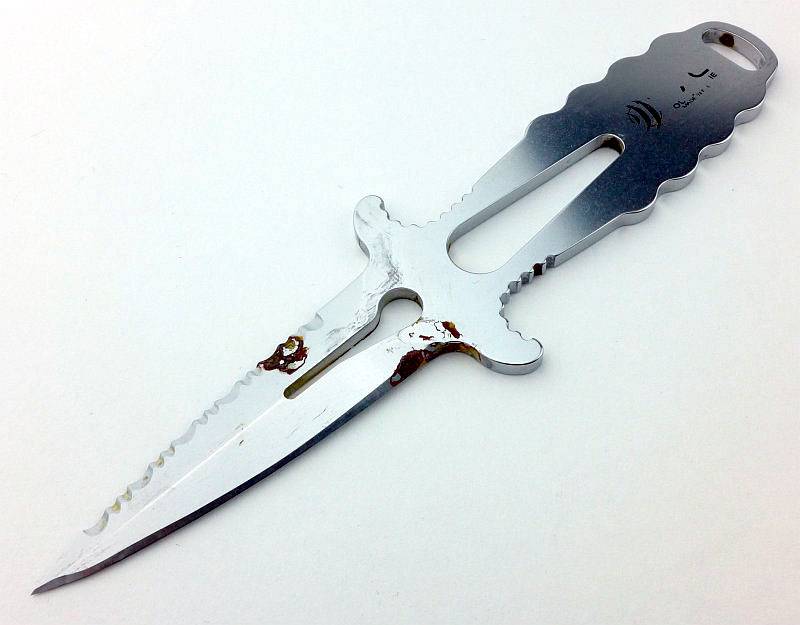
Next up the DK11. Though this does not look too bad, there is rust going into the handle, and around 30% of the edge has corroded. After re-sharpening this knife is was clear the edge had pitted and become damaged. The serrations however show no signs of rust and were unaffected.
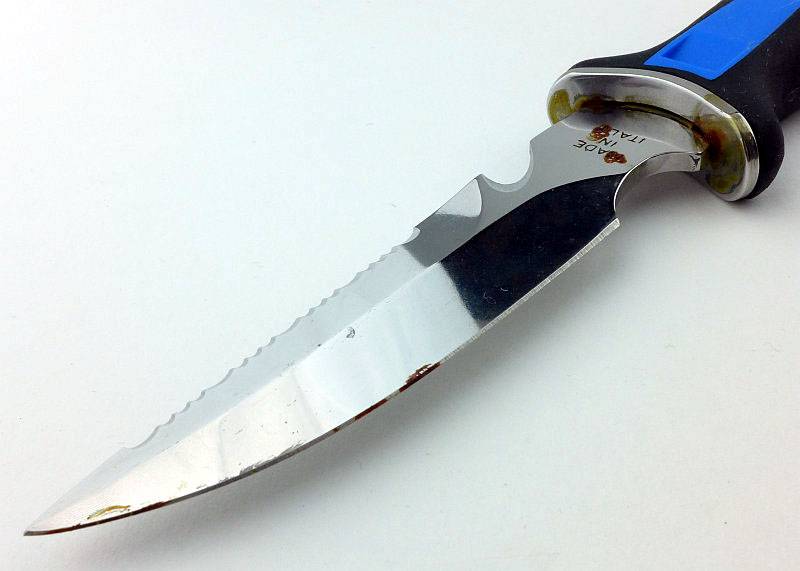
Lastly the DK511/14 which was looking one of the worst. It was also the first to show signs of rust after only two hours immersion. The mirror finish on the blade has helped protect it, but the edge has suffered quite a lot of corrosion and pitting.
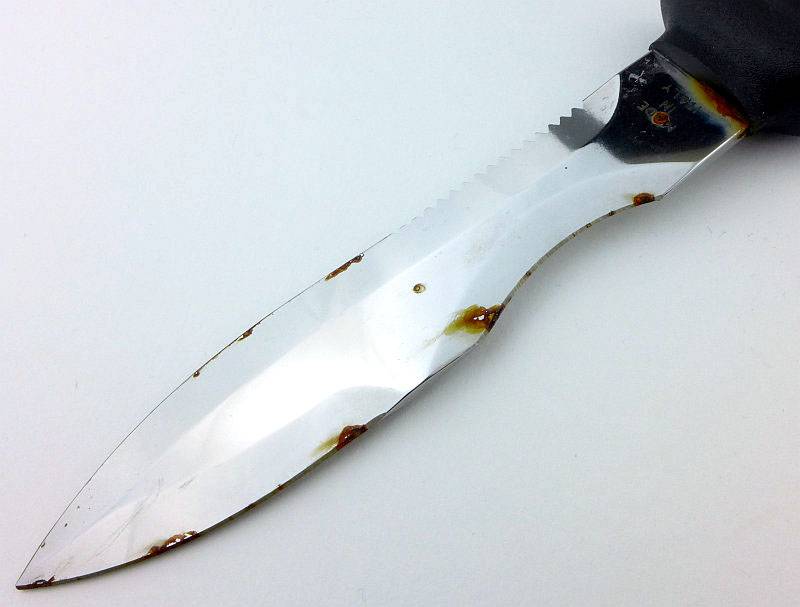
These knives definitely need a little care and attention and should be cleaned and have grease applied to protect the blades.
Of the three, the DK9 felt very appropriate as a forearm mounted backup blade. Small, easy to forget you are wearing it, and importantly, being on the arm it is easier to watch as you re-sheath it – that point is wicked and will bite you if you are not careful.
The retention system was the least easy to use as you pretty much had to drag the knife out and push it home like a friction fit. Getting gloved fingers under the plastic clips was unreliable.
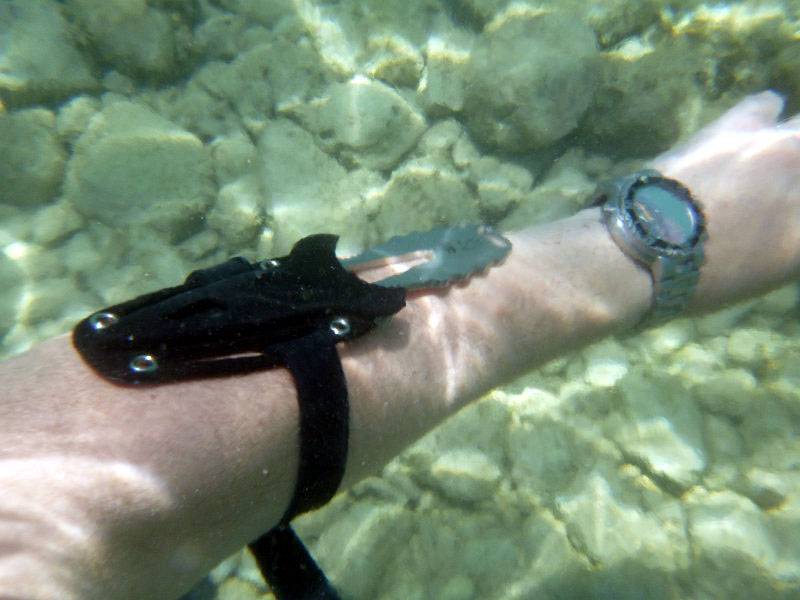
Going to a leg mount with the DK11, on dry land, the knife release catch was the stiffest of all the sprung clip designs and I thought it would make things a struggle in the water. It was much easier to work with once strapped to your leg, but still not as easy as I would really like. One winning, and unique, feature is the sliding lock. It really did give peace of mind to know that the blade was positively locked into the sheath, and unlocking to then allow the blade to be released was easy.
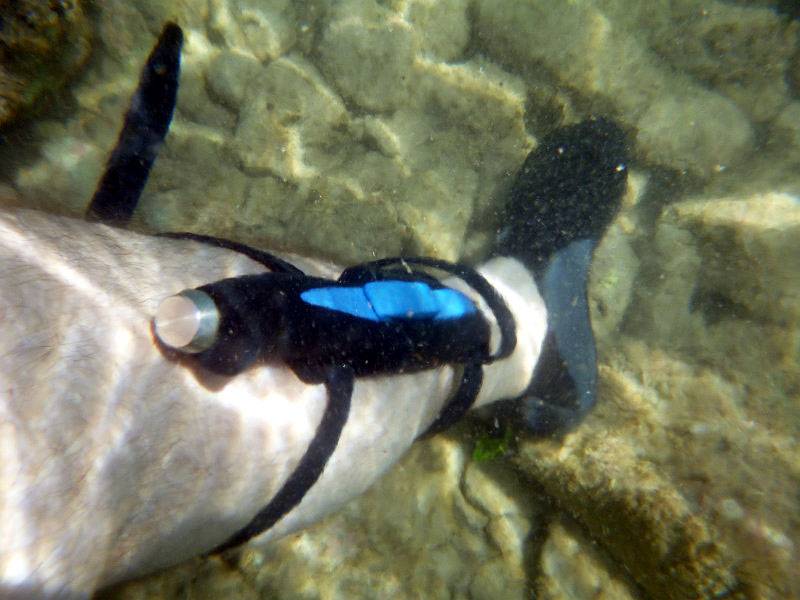
Lastly the DK511/14 which takes up much more room on your leg. With the rubber retaining ring pulled off the knife handle, the knife actually rattles around in the sheath and will fall out if the sheath is tipped up. This is unlike the other two where simply fully inserting the knife will lock it into the sheath – you have to watch this and make sure you re-fit the rubber retaining strap. There is a time and a place for a big knife, and the DK511/14 gives you a lot of blade for the money.
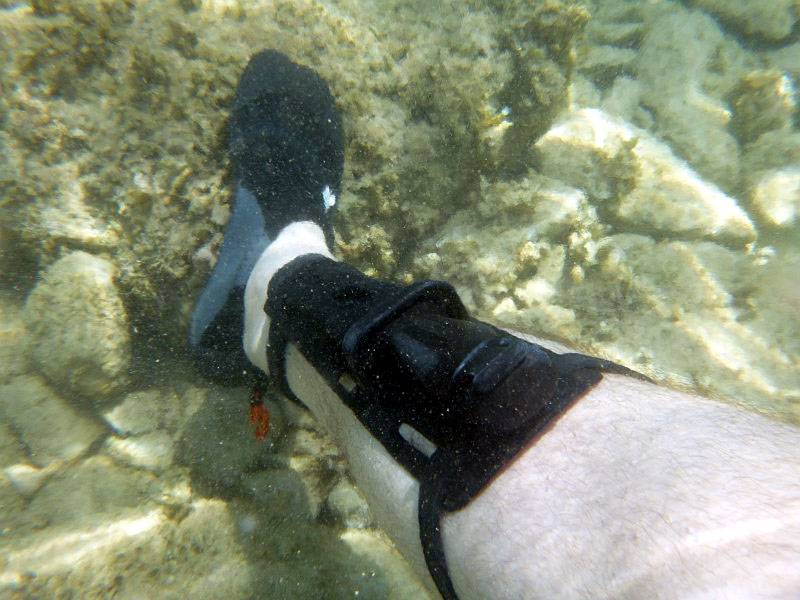
Review Summary
The views expressed in this summary table are from the point of view of the reviewer’s personal use. I am not a member of the armed forces and cannot comment on its use beyond a cutting tool or field/hunting knife.
Something that might be a ‘pro’ for one user can be a ‘con’ for another, so the comments are categorised based on my requirements. You should consider all points and if they could be beneficial to you.
| _______________________________________________ | _______________________________________________ |
| Things I like | What doesn’t work so well for me |
| _______________________________________________ | _______________________________________________ |
| Excellent cutting results from the DK9 | None of the models are safe for ‘release’ tasks due to sharp points a double edged blades. |
| The DK11 has a locking system to ensure the blade is secure. | All models suffered edge damage from corrosion. |
| Good value. | DK511/14 knife retention is fiddly to use. |
| Effective rubber straps. | |
| Sizes from Compact to BFK to choose from. |
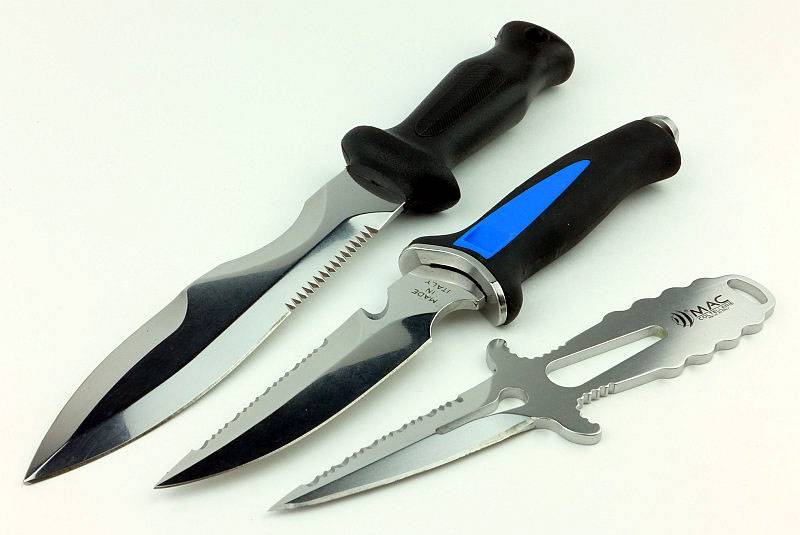
Discussing the Review:
Please feel free to add comments to the review, but the ideal place to freely discuss these reviews is on a forum. If you started reading the shorter forum version of the review, but followed the link this full exclusive review, please return to that forum to discuss the review there.
If you read the review entirely on Tactical Reviews, please consider one of the following to join in any discussion.
EdgeMatters – Sponsored Reviews (UK based Forum for Knife Makers and Collectors)
BladeForums – Knife Reviews (US based Forum for Knife Discussion)
CandlePowerForums – Knife Reviews Section (Largest and Friendliest Flashlight Community Forum)

